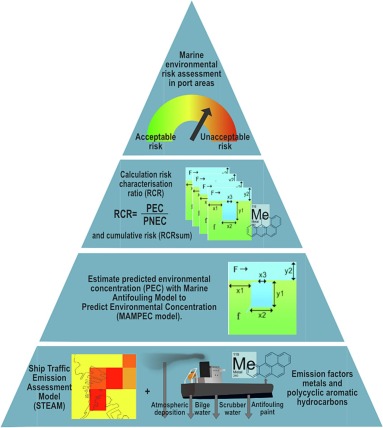2023-06-13 チャルマース工科大学
◆スクラバーは硫黄などの有害物質を除去するための装置であり、水環境への放出によるリスクが問題となっています。研究者は、環境リスク評価のモデルを改善する必要性を指摘しています。
<関連情報>
- https://news.cision.com/chalmers/r/marine-environment-at-risk-due-to-ship-emissions,c3783134
- https://www.sciencedirect.com/science/article/pii/S0025326X23002369?via%3Dihub
港湾における船舶活動から発生する金属と多環芳香族炭化水素の累積的環境リスク評価 Cumulative environmental risk assessment of metals and polycyclic aromatic hydrocarbons from ship activities in ports
Anna Lunde Hermansson, Ida-Maja Hassellöv, Jukka-Pekka Jalkanen, Erik Ytreberg
Marine Pollution Bulletin Available online: 15 March 2023
DOI:https://doi.org/10.1016/j.marpolbul.2023.114805

Highlights
•Metals and polycyclic aromatic hydrocarbons from ships result in unacceptable risk.
•Antifouling and scrubbers are the main contributors to the cumulative risk in ports.
•Current risk assessment of scrubbers is not providing adequate protection.
•Stricter regulations on ship-activities would reduce contaminant load in ports.
Abstract
Marine environmental risk assessments rarely consider the cumulative risk from multiple contaminants and sources. Ships give rise to a range of contaminants, originating from different onboard sources, resulting in contaminant loads to the marine environment. Here, the Ship Traffic Emission Assessment Model (STEAM), in combination with the hydrodynamic and chemical fate model MAMPEC, was used to calculate loads and predicted environmental concentrations (PECs) of metals and polycyclic aromatic hydrocarbons, in four ports. PECs were compared to the predicted no effect concentrations (PNEC) to assess environmental risk from the different onboard sources, both separately and cumulatively. The results show that three out of four ports were subject to unacceptable risk. This study highlights the importance of accounting for multiple contaminant sources when assessing the marine environmental risks of shipping and challenges the suitability of the proposed new international guidelines on how to assess risk of scrubber water discharge.




